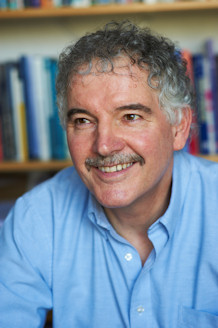'Understanding the Boundaries and Mobilities of Regenerative Medicine: an STS analysis
Wednesday 15 February 2012, 4.15PM to 17:30
Speaker(s): Prof Andrew Webster, Director SATSU, University of York
Abstract

Contemporary developments in the biosciences associated with new biological possibilities – such as seen in synthetic biology, embryonic stem cell research, and gene therapy –depend on the articulation and integration of different sciences and technologies, such as engineering, physics and biology within synthetic biology. As a result, the epistemic and professional boundaries of these biosciences are fluid, highly mobile and yet to be stabilised. While the matter of disciplinary boundaries and their formation is of interest to those within the field of science and technology studies (e.g. see Gieryn, 1983), what has been of especial interest is the ways in which these biosciences not only generate new biological but also social possibilities by disturbing our understanding of the boundaries between the body, nature, and identity (not least in the form of human/animal hybrids), and how these create new ‘bio-objects’ that are contested, exploited and require the search for new forms of state and societal regulation and governance (Vermeulen et al., 2012). Indeed, these changes can be so fundamental as to require a radically new approach to the human ‘constitution’, in both its biological and socio-legal senses (Jasanoff, 2011).
In this paper I discuss the ways in which different social actors within and outside of science have sought to define and stabilise the meaning and boundaries of regenerative medicine, and how other processes continually work against this. In doing so I examine how regenerative medicine is mobilised precisely through these contrasting processes and how these different ‘mobilities’ reflect different purposes and interests. I argue that the primary form through which regenerative medicine gains mobility is through a corporate/regulatory nexus that shapes the economic and clinical mobilisation of the field. However I suggest that this confronts three other forms of mobility – found within the cultural, corporeal and institutional domains – that pose different sorts of challenges to the development of the field.
For related reading see:
Jasanoff, S. (ed.) (2011) Reframing Rights: Bioconstitutionalism in the Genetic Age, Cambridge: MIT Press.
Vermeulen, N. Tamminen, S. and A. Webster (eds.) (2012) Bio-objects; Life in the 21st Century
Webster et al. (2011) Experimental heterogeneity and standardisation: Stem cell products and the clinical trial process, Biosocieties, 6: 400-419.
Location: W/222
